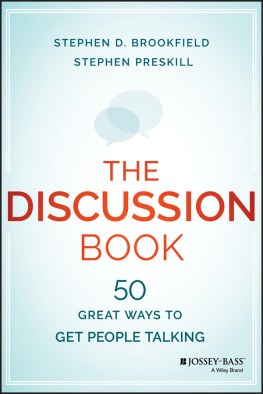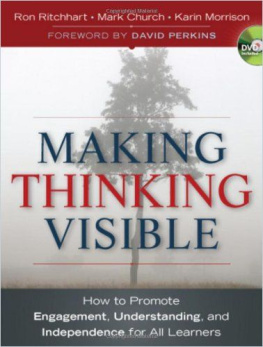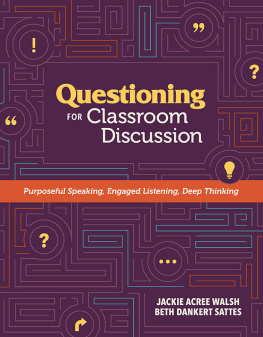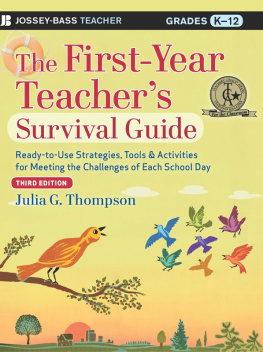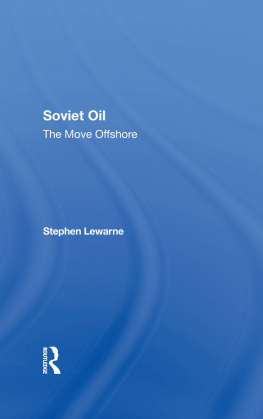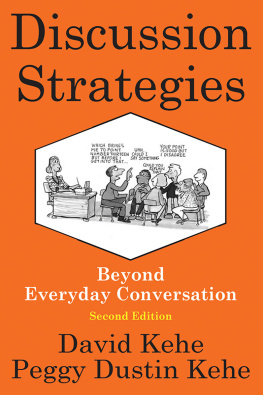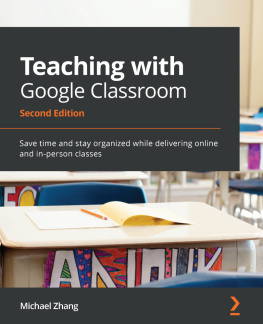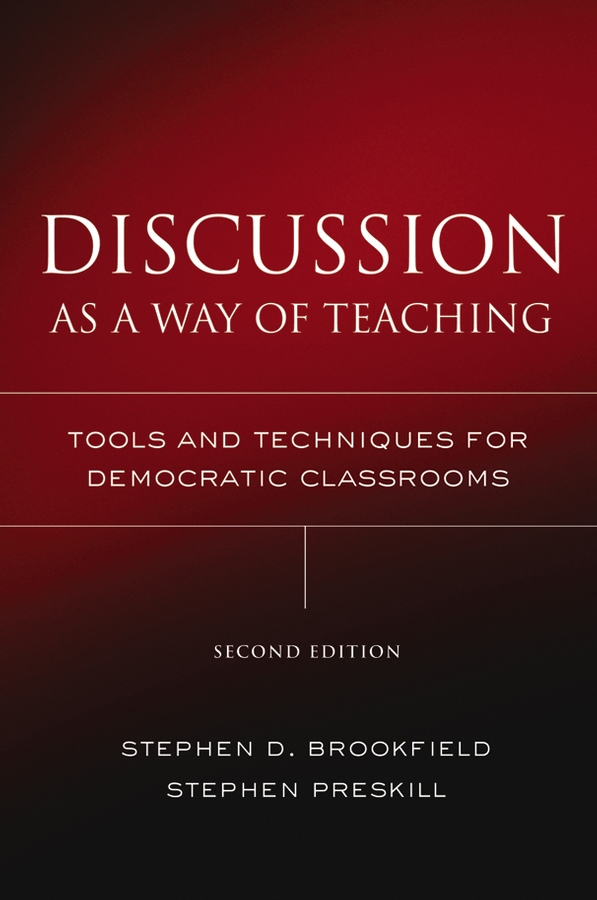CONTENTS

Copyright 1999, 2005 by John Wiley & Sons, Inc. All rights reserved.
Published by Jossey-Bass
A Wiley Imprint
989 Market Street, San Francisco, CA 94103-1741 www.josseybass.com
No part of this publication may be reproduced, stored in a retrieval system, or transmitted in any form or by any means, electronic, mechanical, photocopying, recording, scanning, or otherwise, except as permitted under Section 107 or 108 of the 1976 United States Copyright Act, without either the prior written permission of the publisher, or authorization through payment of the appropriate per-copy fee to the Copyright Clearance Center, Inc., 222 Rosewood Drive, Danvers, MA 01923, 978-750-8400, fax 978-646-8600, or on the Web at www.copyright.com . Requests to the publisher for permission should be addressed to the Permissions Department, John Wiley & Sons, Inc., 111 River Street, Hoboken, NJ 07030, 201-748-6011, fax 201-748-6008, or online at www.wiley.com/go/permissions .
Limit of Liability/Disclaimer of Warranty: While the publisher and author have used their best efforts in preparing this book, they make no representations or warranties with respect to the accuracy or completeness of the contents of this book and specifically disclaim any implied warranties of merchantability or fitness for a particular purpose. No warranty may be created or extended by sales representatives or written sales materials. The advice and strategies contained herein may not be suitable for your situation. You should consult with a professional where appropriate. Neither the publisher nor author shall be liable for any loss of profit or any other commercial damages, including but not limited to special, incidental, consequential, or other damages.
Jossey-Bass books and products are available through most bookstores. To contact Jossey-Bass directly call our Customer Care Department within the U.S. at 800-956-7739, outside the U.S. at 317-572-3986, or fax 317-572-4002.
Jossey-Bass also publishes its books in a variety of electronic formats. Some content that appears in print may not be available in electronic books.
Library of Congress Cataloging-in-Publication Data
Brookfield, Stephen.
Discussion as a way of teaching : tools and techniques for democratic classrooms / Stephen D. Brookfield, Stephen Preskill.
p. cm.
Includes bibliographical references and index.
ISBN-10: 0-7879-7808-6 (alk. paper)
ISBN-13: 978-0-7879-7808-2 (alk. paper)
1. College teaching. 2. DiscussionStudy and teaching. 3. Forums (Discussion and debate) I. Preskill, Stephen, 1950- II. Title.
LB2331.B679 2005
378.12dc22
2005008307
The Jossey-Bass Higher and Adult Education Series
PREFACE TO THE SECOND EDITION
Since the first edition of Discussion as a Way of Teaching appeared in 1999 we have received continuous feedback on its benefits and omissions. The benefits seem to be those we had hoped for; readers have told us that the book is a comprehensive soup to nuts guide to planning and conducting exercises that is full of helpful exercises and practical suggestions. However, two omissions have been brought to our attention. The first concerns the explosion of online learning that has occurred in the first few years of the twenty-first century. We alluded to this development in the first edition but that analysis was clearly insufficient given developments in this area since 1999. Consequently, Chapters Eleven and Twelve have been added to explore this new phenomenon. Chapter Eleven examines the underlying dynamics of online discussion and concludes that although they are not that startlingly dissimilar to those of face-to-face discussion they do suggest specific practices and approaches uniquely suited to an online environment. Chapter Twelve suggests how the online environment can be adapted to discussion as a way of teaching. We explore how to increase participation, assign students to small groups, link interaction to content modules, and evolve ground rules for discussion. The other omission readers noted was the lack of attention to contemporary theoretical positions such as structuralism and post-structuralism and their relevance for understanding and practicing discussion-based teaching. To remedy this omission we have written Chapters Thirteen and Fourteen. These two chapters explore a number of theoretical conceptscultural capital, disciplinary power, teachers as judges of normality, repressive tolerance, and the discourse theory of democracyand describe the discussion practices and exercises that these different ideas call forth.
August, 2005
St. Paul, Minnesota
Albuquerque, New Mexico
Stephen Brookfield
Stephen Preskill
PREFACE TO THE FIRST EDITION
This book is born of friendship, curiosity, anxiety, and service.
The two of us became friends while we were both faculty members at the University of St. Thomas in St. Paul, Minnesota. Our friendship was fostered by a common passion for many thingsthe films of Woody Allen figured prominently in our early conversationsbut what we kept returning to as we talked was the joyful yet contradictory experience of teaching through discussion. In coffee shops, at home, in university corridors, and on the street, we spent hours celebrating the glorious unpredictability of discussion and exploring its purpose and value. Usually our conversations ended with us giving each other advice on the problems we faced as we used the method in our own practice.
During these conversations we often remarked how wed love to have a book available to us that laid out a rationale for using discussion, guided us through its different configurations, and suggested various resolutions to the problems that arose in its use. What would the authors say about guided discussion (a topic about which we talked heatedly and repeatedly)? How would they conceive of the teachers role in discussion? What would be their thoughts on using discussion in groups characterized by racial, class, and gender diversity? How would they deal with students who dominated conversation or those who never spoke? As we considered these and other questions, we would often say, You know, we ought to write a book about this. An idea that was first mentioned lightly and jokingly became a serious possibility when Steve Preskill accepted a position at the University of New Mexico in Albuquerque. We realized that distance threatened our friendship but it stood a better chance of remaining strong if we worked on a common project. The project we chose is the book you now hold in your hands.
What kept us going as we coauthored this book was curiosity about what would end up on its pages. We asked ourselves a series of questions that essentially became the books chapters. We wanted to know how we would justify the use of discussion to colleagues who saw no connections between how students talked to each other in class and promoting democracy in the wider society. How would we respond to the charge that discussion was a time-wasting distraction from teachers primary work of transmitting content to students? What advice would we give on how to prepare students to participate in discussion? What were the best ways we knew to get discussion started and keep it going? What were the most creative adaptations wed seen that kept routine and ennui from creeping into the conversation? How did factors of race, class, and gender play out in discussions? What advice would we give to each other about how to ensure that all students felt their voices were heard and respected? We were intrigued to know what we would say in response to these and other questions. Writing this book became our way of finding out.


